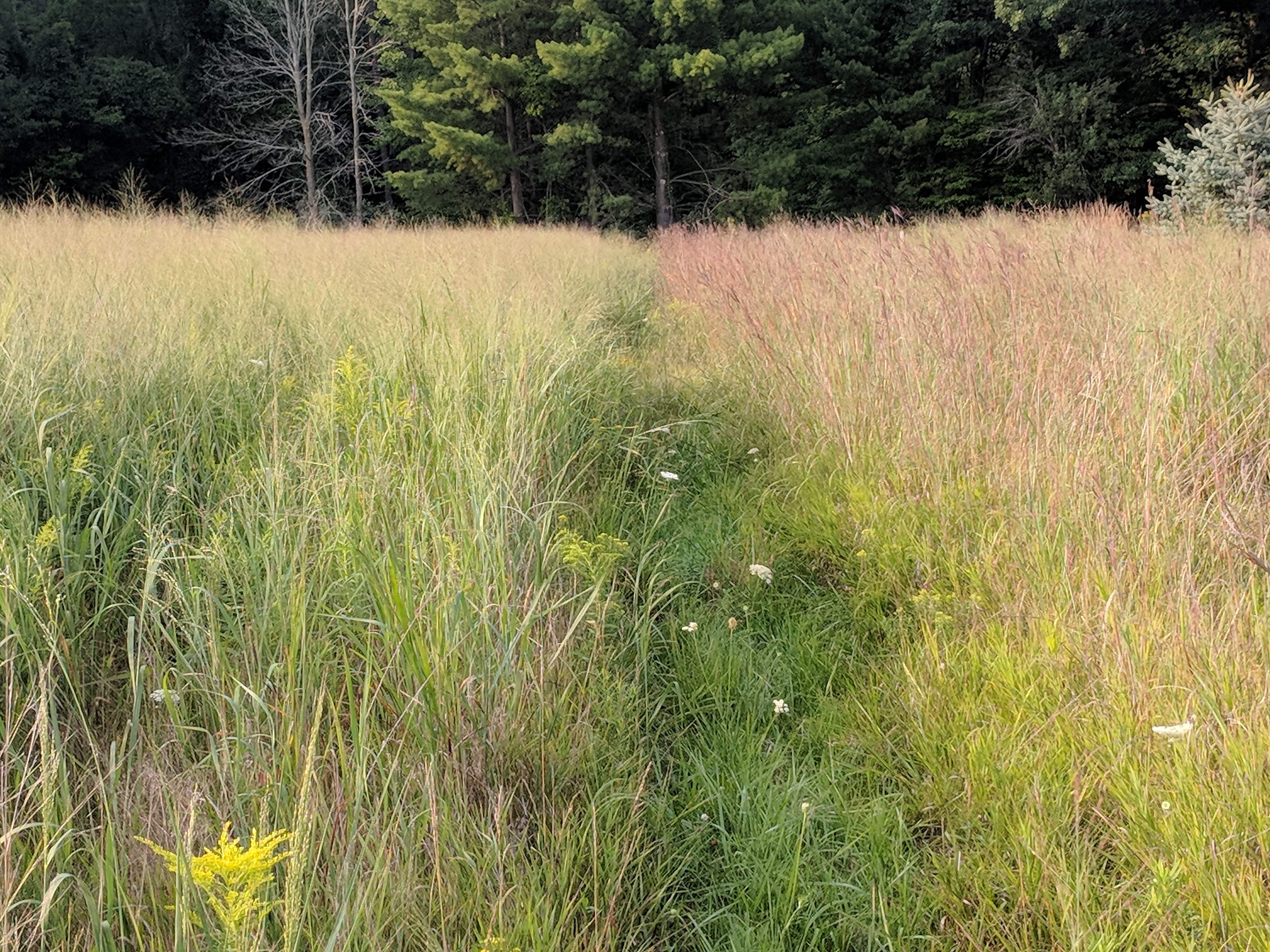bigbendmarine
5 year old buck +
Happily admitting my ignorance and opening myself up for a schooling if / as deserved... so my question is why is switchgrass so widely preferred over weeds? And I ask relative not to just a single factor but when trying to consider multiple factors.
1) Food value -- a number of weeds offer forb value, whereas my undestanding is switchgrasses don't. For example a fair portion of my property has heavy blackberry cover on it and I know the deer browse it.
2) Cover -- maybe just a southern thing, but bidens (not 100% sure if alba or pilosa and not sure it matters) get almost 6' tall on my place, and just about anywhere I want screening all I have to do is leave it uncut. It stays up all winter long and right on into the spring. Here's a pic showing bidens behind what I believe to be some type of switchgrass (welcome ID)... and as is shown height is comparable. This is a spot where both aren't very deep but if I leave bidens in a strip over 10' deep you can't see a thing through it. Due to the countless "spanish needle" seeds that bidens produces, I can cut it to the ground in spring and by fall I'm guaranteed 6' tall thick visible screening cover again. Horrible as purposefully propagating such a prolific weed may sound, I've used it the last few years to screen my fall plots which lie only about 150' from my house and it sure seems to make the deer relatively comfortable coming into the plots.

3) Bedding -- I see spots deer have used for bedding on my place in regular grass among the weeds and am not sure why switchgrass would be much preferred?
May well be a number of other motivators for switchgrass plantings, but again admitting my ignorance I don't know them / welcome educating.
Reason I bring up the topic is a fair amount of literature really seems to push switchgrass plantings, and if the brown grass shared in my picture above is indeed in the switchgrass family I've got multiple spots dotted along my property that already have switchgrass and I'm guessing I could act to help it spread. Just want to make sure I understand the detailed motivations behind doing so before I add it as a habitat to-do action item.
REALLY looking forward to replies on this one, as I'm eager for whatever feedback I can get / am ready to lose my utter ignorance on the subject!
1) Food value -- a number of weeds offer forb value, whereas my undestanding is switchgrasses don't. For example a fair portion of my property has heavy blackberry cover on it and I know the deer browse it.
2) Cover -- maybe just a southern thing, but bidens (not 100% sure if alba or pilosa and not sure it matters) get almost 6' tall on my place, and just about anywhere I want screening all I have to do is leave it uncut. It stays up all winter long and right on into the spring. Here's a pic showing bidens behind what I believe to be some type of switchgrass (welcome ID)... and as is shown height is comparable. This is a spot where both aren't very deep but if I leave bidens in a strip over 10' deep you can't see a thing through it. Due to the countless "spanish needle" seeds that bidens produces, I can cut it to the ground in spring and by fall I'm guaranteed 6' tall thick visible screening cover again. Horrible as purposefully propagating such a prolific weed may sound, I've used it the last few years to screen my fall plots which lie only about 150' from my house and it sure seems to make the deer relatively comfortable coming into the plots.

3) Bedding -- I see spots deer have used for bedding on my place in regular grass among the weeds and am not sure why switchgrass would be much preferred?
May well be a number of other motivators for switchgrass plantings, but again admitting my ignorance I don't know them / welcome educating.
Reason I bring up the topic is a fair amount of literature really seems to push switchgrass plantings, and if the brown grass shared in my picture above is indeed in the switchgrass family I've got multiple spots dotted along my property that already have switchgrass and I'm guessing I could act to help it spread. Just want to make sure I understand the detailed motivations behind doing so before I add it as a habitat to-do action item.
REALLY looking forward to replies on this one, as I'm eager for whatever feedback I can get / am ready to lose my utter ignorance on the subject!
Last edited:









